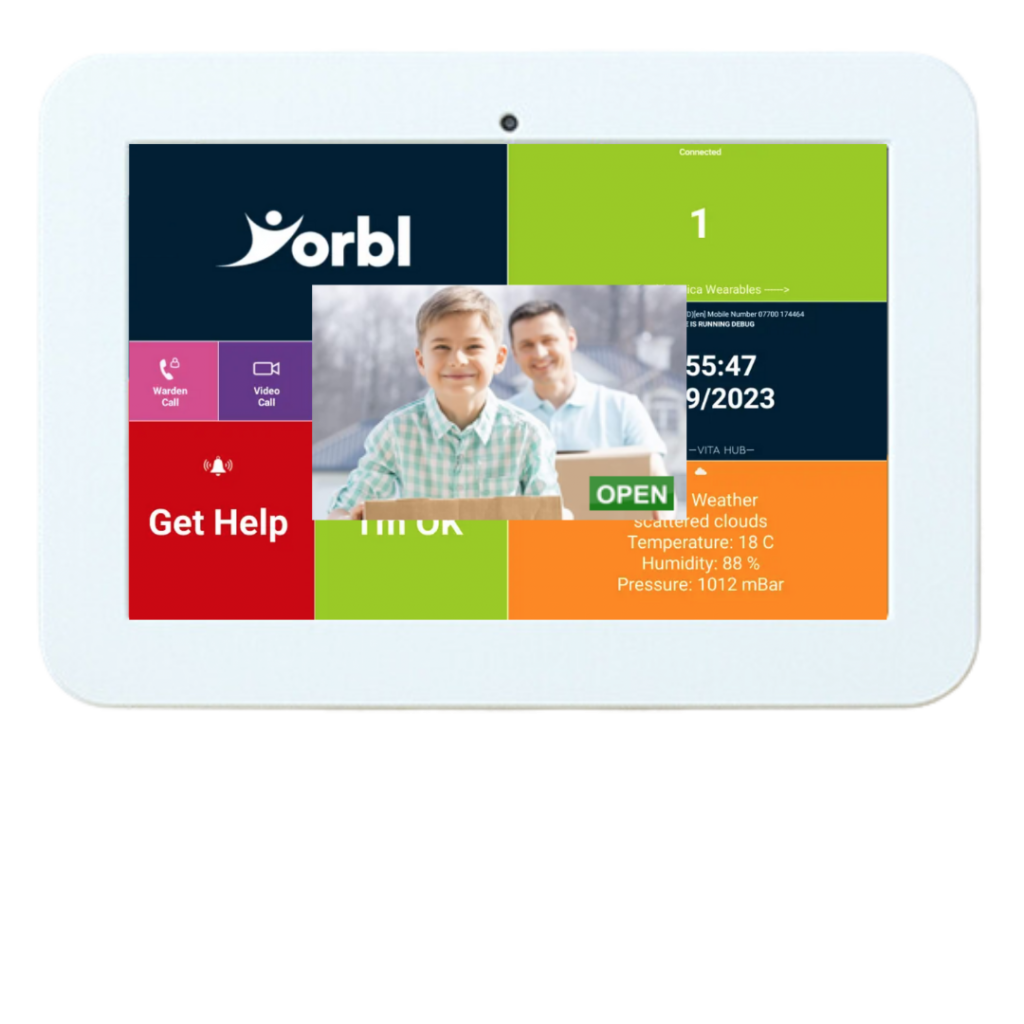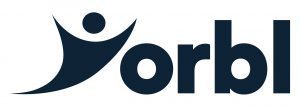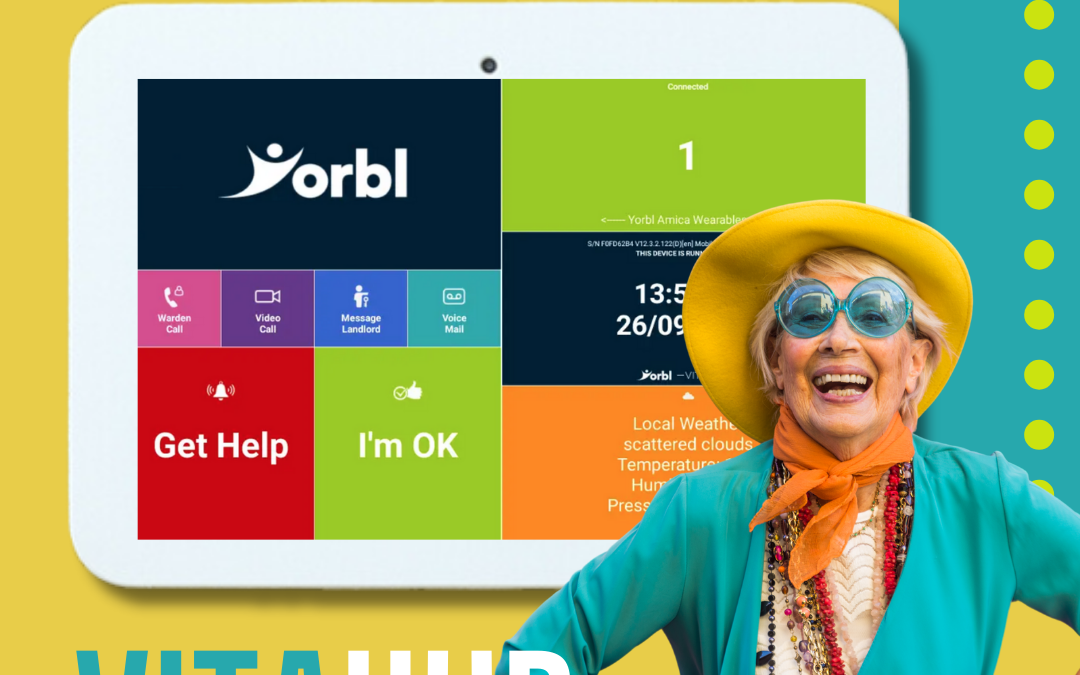As our society continues to age, the adoption of smart home technologies presents increasingly effective means to support the well-being of our loved ones. Yorbl’s solutions encompass a range of sensors, peripherals, wearables and analytics cloud solutions for home telecare and community living, linked together to create a fully digital ecosystem. When these elements collaborate, they can enhance the comfort and security of individuals residing independently or in assisted living arrangements. By leveraging Hub’s capabilities to tailor to individual needs, care homes and organisations can streamline operations, improve response times, and provide proactive care to those who need it most. These systems are pivotal in bolstering the safety and well-being of individuals who need extra support, such as the elderly or those with disabilities.

Yorbl Vita Hub ensures seamless communication and connectivity, allowing caregivers and residents to stay connected effortlessly. Hub’s ability to integrate with digital door entry systems creates just a small part of its many amazing features. Digital door entry systems offer heightened security levels compared to traditional locks and keys, minimising the risk of unauthorised access, and ensuring residents’ safety.
A Hub User can access the Digital Video Door Entry feature on their device, see and speak to the caller, allowing or denying access at the door. This convenience is invaluable, especially in scenarios where multiple people require access or when granting temporary entry to visitors or service providers.
Because of Hub’s real-time monitoring and notification functionalities, building managers/family can receive alerts via the Digital Door Entry Feature, and via Yorbl Vu can record when someone enters or attempts to enter a User’s flat/room, flagging up any unusual patterns or concerns, enhancing peace of mind and security and ensuring prompt assistance when needed.
Yorbl Vita Hub: You’re not only improving security and convenience but giving peace of mind for residents and occupants. See more about this super solution here: Yorbl Vita Hub | Yorbl

